Effects of Ultrasonic Introduced by L-Shaped Ceramic Sonotrodes on Microstructure and Macro-Segregation of 15t AA2219 Aluminum Alloy Ingot
Abstract
:1. Introduction
2. Materials and Methods
2.1. Casting
2.2. Sampling
2.3. Characterization
3. Results and Discussions
3.1. Anti-Corrosion Property of L-Shaped Sonotrode
3.2. Effects on Macrostructure and Microstructure
3.3. Effects on the Secondary Phase
3.4. Effects on Macro-Segregation
4. Conclusions
- The L-shaped ceramic ultrasonic introduction device can effectively avoid the erosion of high-temperature melt on sonotrode and the heat radiation of the high-temperature heat flow to the transducer.
- The ultrasound introduced by the L-shaped ultrasonic introduction device made of ceramic can refine grains better and make their size and macro distribution more homogenized than the straight-rod ultrasonic introduction device due to the stronger mechanical vibration and sound flow effect in the melt.
- L-shaped ultrasonic-assisted casting can produce more dot-shaped and globular precipitation phases conducive to plastic deformation of the matrix and make the distribution of precipitated phases more homogenized with less concentration than straight-rod ultrasonic-assisted casting.
- Both ultrasonic-assisted castings can decrease macro-segregation of the chemical composition in the AA2219 aluminum alloy ingot, causing the concentration of Cu and Ti to distribute more evenly in the whole section.
Author Contributions
Funding
Acknowledgments
Conflicts of Interest
References
- Wang, H.; Yi, Y.; Huang, S. Influence of Pre-Deformation and Subsequent Ageing on the Hardening Behavior and Microstructure of 2219 Aluminum Alloy Forgings. J. Alloy. Compd. 2016, 685, 941–948. [Google Scholar] [CrossRef]
- Lam, A.C.L.; Shi, Z.; Yang, H.; Wan, L.; Davies, C.M.; Lin, J.; Zhou, S. Creep-Age Forming AA2219 Plates with Different Stiffener Designs and Pre-Form Age Conditions: Experimental and Finite Element Studies. J. Mater. Process. Technol. 2015, 219, 155–163. [Google Scholar] [CrossRef]
- An, L.; Cai, Y.; Liu, W.; Yuan, S.; Zhu, S.; Meng, F. Effect of Pre-Deformation on Microstructure and Mechanical Properties of 2219 Aluminum Alloy Sheet by Thermomechanical Treatment. Trans. Nonferrous Met. Soc. China 2012, 22, 370–375. [Google Scholar] [CrossRef]
- Zhang, D.; Wang, G.; Wu, A.; Zhao, Y.; Li, Q.; Liu, X.; Meng, D.; Song, J.; Zhang, Z. Study on the Inconsistency in Mechanical Properties of 2219 Aluminum Alloy TIG-welded Joints. J. Alloy. Compd. 2019, 777, 1044–1053. [Google Scholar] [CrossRef]
- Zhang, L.; Li, X.; Li, R.; Jiang, R.; Zhang, L. Effects of High-Intensity Ultrasound on the Microstructures and Mechanical Properties of Ultra-Large 2219 Al Alloy Ingot. Mater. Sci. Eng. A 2019, 763, 138154. [Google Scholar] [CrossRef]
- Cao, H.; Hao, M.; Shen, C.; Liang, P. The Influence of Different Vacuum Degree on the Porosity and Mechanical Properties of Aluminum Die Casting. Vacuum 2017, 146, 278–281. [Google Scholar] [CrossRef]
- Paramatmuni, R.K.; Chang, K.; Kang, B.S.; Liu, X. Evaluation of Cracking Resistance of DC Casting High Strength Aluminum Ingots. Mater. Sci. Eng. A 2004, 379, 293–301. [Google Scholar] [CrossRef]
- Ni, Z.H.; Li, X.Q.; Zhang, M. Effect of ultrasonic external field on solidification microstructure of 7050 aluminum alloy ingot. Mater. Sci. Eng. Powder Metall. 2011, 16, 341–348. [Google Scholar]
- Zhang, M.; Li, X.Q.; Li, Z.H. Microscopic looseness in 7050 alloy under high power ultrasonic field. China Foundry 2011, 60, 136–139. [Google Scholar]
- Wang, J.W.; Xiong, Y.X. Effect of ultrasonic on the microstructure and aging characteristics of 7050 aluminum alloy. Spec. Cast. Nonferrous Alloy 2012, 32, 1086–1090. [Google Scholar]
- Wang, G.; Dargusch, M.S.; Qian, M.; Eskin, D.G.; StJohn, D.H. The Role of Ultrasonic Treatment in Refining the As-Cast Grain Structure During the Solidification of an Al–2Cu Alloy. J. Cryst. Growth 2014, 408, 119–124. [Google Scholar] [CrossRef]
- Haghayeghi, R.; Heydari, A.; Kapranos, P. The Effect of Ultrasonic Vibrations Prior to High Pressure Die-Casting of AA7075. Mater. Lett. 2015, 153, 175–178. [Google Scholar] [CrossRef]
- Tian, Y.; Liu, Z.; Li, X.; Zhang, L.; Li, R.; Jiang, R.; Dong, F. The Cavitation Erosion of Ultrasonic Sonotrode During Large-Scale Metallic Casting: Experiment and Simulation. Ultrason. Sonochem. 2018, 43, 29–37. [Google Scholar] [CrossRef] [PubMed]
- Barbosa, J.; Puga, H. Ultrasonic Melt Processing in the Low Pressure Investment Casting of Al Alloys. J. Mater. Process. Technol. 2017, 244, 150–156. [Google Scholar] [CrossRef]
- Lebon, G.S.B.; Tzanakis, I.; Pericleous, K.; Eskin, D. Experimental and Numerical Investigation of Acoustic Pressures in Different Liquids. Ultrason. Sonochem. 2018, 42, 411–421. [Google Scholar] [CrossRef] [PubMed]
- Shi, C.; Shen, K.; Mao, D.H.; Liang, G.; Li, F. Research Progress on Ceramic Tool Rod for Ultrasound Treatment of Metal Melt. Hot Work. Technol. 2018, 2018, 5–9. [Google Scholar]
- Liang, G.; Shi, C.; Zhou, Y.; Mao, D. Numerical Simulation and Experimental Study of an Ultrasonic Waveguide for Ultrasonic Casting of 35CrMo Steel. J. Iron Steel Res. (Int.) 2016, 23, 772–777. [Google Scholar] [CrossRef]
- Guo, C.W.; Li, J.J.; Yuan, M.; Wang, J.C. Growth Behaviors and Forced Modulation Characteristics of Dendritic Sidebranches in Directional Solidification. Phys. Sin. 2015, 64. [Google Scholar] [CrossRef]
- Liang, G.; Chen, S.; Yajun, Z.; Daheng, M. Effect of Ultrasonic Treatment on the Solidification Microstructure of Die-Cast 35CrMo Steel. Met. Open Access Metall. J. 2016, 6, 260. [Google Scholar] [CrossRef]
- Liu, X.; Osawa, Y.; Takamori, S.; Mukai, T. Grain Refinement of AZ91 Alloy by Introducing. Ultrasonic Vibration During Solidification. Mater. Lett. 2008, 62, 2872–2875. [Google Scholar] [CrossRef]
- Flannigan, D.J.; Suslick, K.S. Plasma Formation and Temperature Measurement During Single-Bubble Cavitation. Nature 2005, 434, 52–55. [Google Scholar] [CrossRef]
- Shi, C.; Shen, K. Twin-Roll Casting 8011 Aluminum Alloy Strips Under Ultrasonic Energy Field. Int. J. Lightweight Mater. Manuf. 2018, 1, 108–114. [Google Scholar]
- Abramov, V.; Abramov, O.; Bulgakov, V.; Sommer, F. Solidification of Aluminum Alloys Under Ultrasonic Irradiation Using Water-Cooled Resonator. Mater. Lett. 1998, 37, 27–34. [Google Scholar] [CrossRef]
- Zhang, M. Effect of Longitudinal and Transverse Vibration of Ultrasonic Radiator on Cavitation and Refining Region of Aluminum Melt. Master’s Thesis, Central South University, Changsha, China, 2014. [Google Scholar]
- Shi, Y.J.; Pan, Q.L.; Li, M.J.; Liu, Z.M.; Huang, Z.Q. Microstructural Evolution During Homogenization of DC Cast 7085 Aluminum Alloy. Trans. Nonferrous Met. Soc. China 2015, 25, 3560–3568. [Google Scholar] [CrossRef]
- Guo, X.; Jiang, R.; Xiaoqian, L.I.; Ruiqing, L.I.; Peng, B. Effect of Aluminum Alloy Melt Treated with Ultrasound on Microstructure and Segregation of Large-Scale Ingot in Semi-Continuous Casting. Hot Work. Technol. 2016, 45, 25–29. [Google Scholar]
- Chen, D.; Li, X.; Guo, D.; Cui, Y.; Jiang, R. Microstructure and Macrosegregation of 7050 Alloy Large Flat Billet in Ultrasonic Semi-Continuous Casting. Spec. Cast. Nonferrous Alloy 2012, 32, 462–465. [Google Scholar]
- Zhang, L.; Li, X.; Li, R.; Jiang, R.; Zhang, L. Effect of Ultrasonication On the Microstructure and Macrosegregation of a Large 2219 Aluminum Ingot. Chin. J. Eng. 2017, 39, 1347–1354. [Google Scholar]
- Li, X. Effect of High Intensitive Ultrasound on AlTiC Refiner. J. Huazhong Univ. Sci. Technol. 2013, 4, 11–15. [Google Scholar]
- Tzanakis, I.; Xu, W.W.; Eskin, D.G.; Lee, P.D.; Kotsovinos, N. In Situ Observation and Analysis of Ultrasonic Capillary Effect in Molten Aluminium. Ultrason. Sonochem. 2015, 27, 72–80. [Google Scholar] [CrossRef]
- Lebon, G.S.B.; Tzanakis, I.; Pericleous, K.; Eskin, D.; Grant, P.S. Ultrasonic Liquid Metal Processing: The Essential Role of Cavitation Bubbles in Controlling Acoustic Streaming. Ultrason. Sonochem. 2019, 55, 243–255. [Google Scholar] [CrossRef]
- Lebon, G.S.B.; Salloum-Abou-Jaoude, G.; Eskin, D.; Tzanakis, I.; Pericleous, K.; Jarry, P. Numerical Modelling of Acoustic Streaming During the Ultrasonic Melt Treatment of Direct-Chill (DC) Casting. Ultrason. Sonochem. 2019, 54, 171–182. [Google Scholar] [CrossRef]
- Ning, J.J.; Xiao, Q.L.; Dong, F.; Huang, M.Z. Effect of Ultrasonic Field on Undercooling Nucleation of TiC Particles in AlTiC Refiner. Mater. Sci. Eng. Powder Metall. 2015, 20, 19–25. [Google Scholar]
- Ding, W.W.; Xia, T.D.; Zhao, W.J.; Hou, Y.F. Refining Performances of TiC and TiAl3 Phases in Master Alloys on Pure Aluminum. Chin. J. Nonferrous Met. 2009, 19, 1025–1031. [Google Scholar]
- Han, Y.; Ke, L.; Wang, J.; Da, S.; Sun, B. Influence of High-Intensity Ultrasound on Grain Refining Performance of Al–5Ti–1B Master Alloy on Aluminum. Mater. Sci. Eng. A 2005, 405, 306–312. [Google Scholar] [CrossRef]

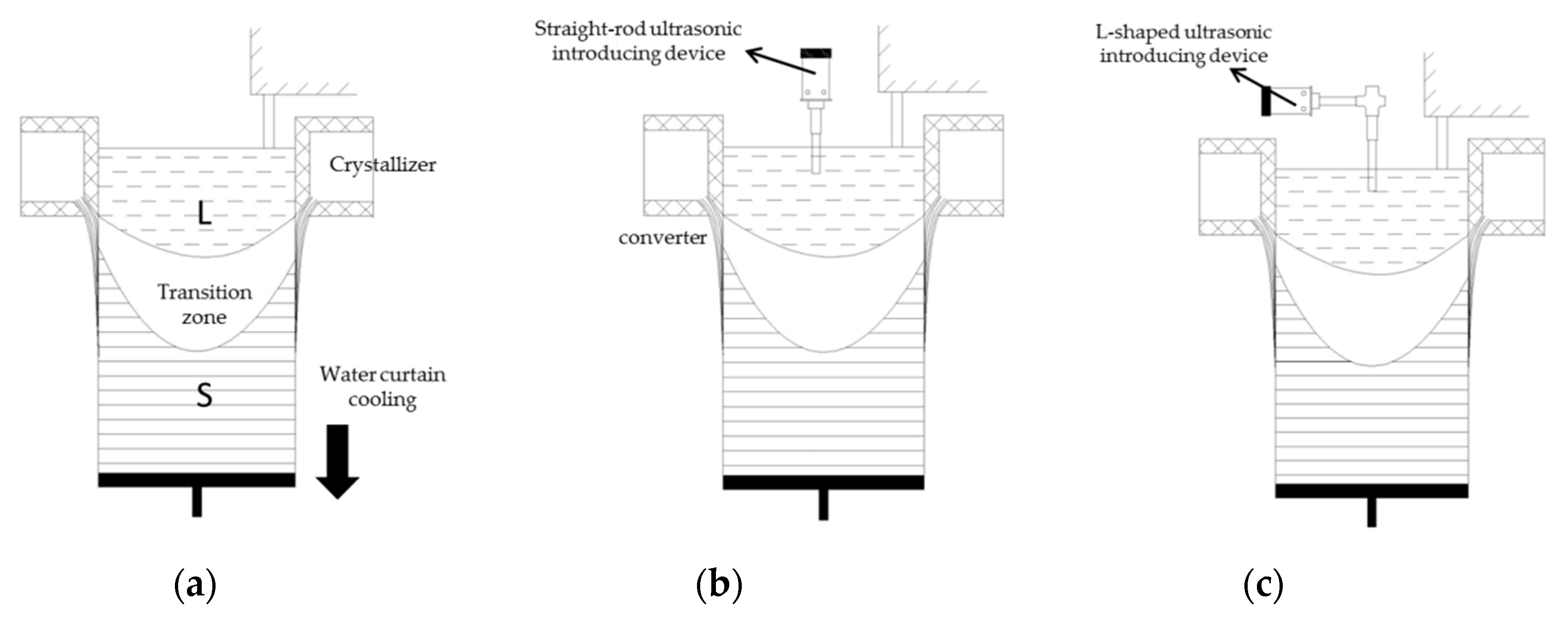
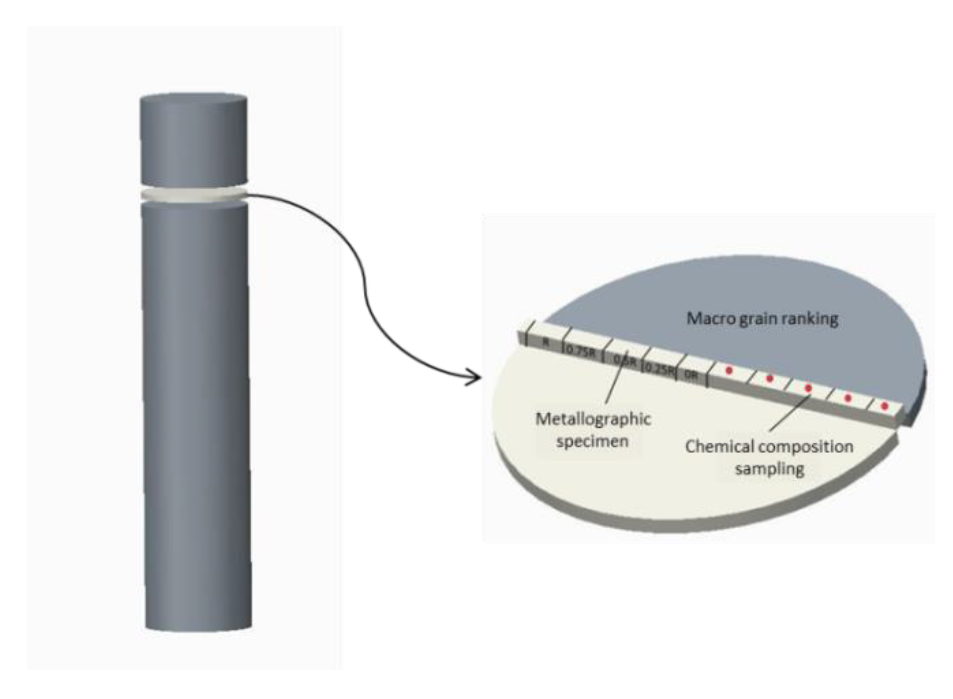
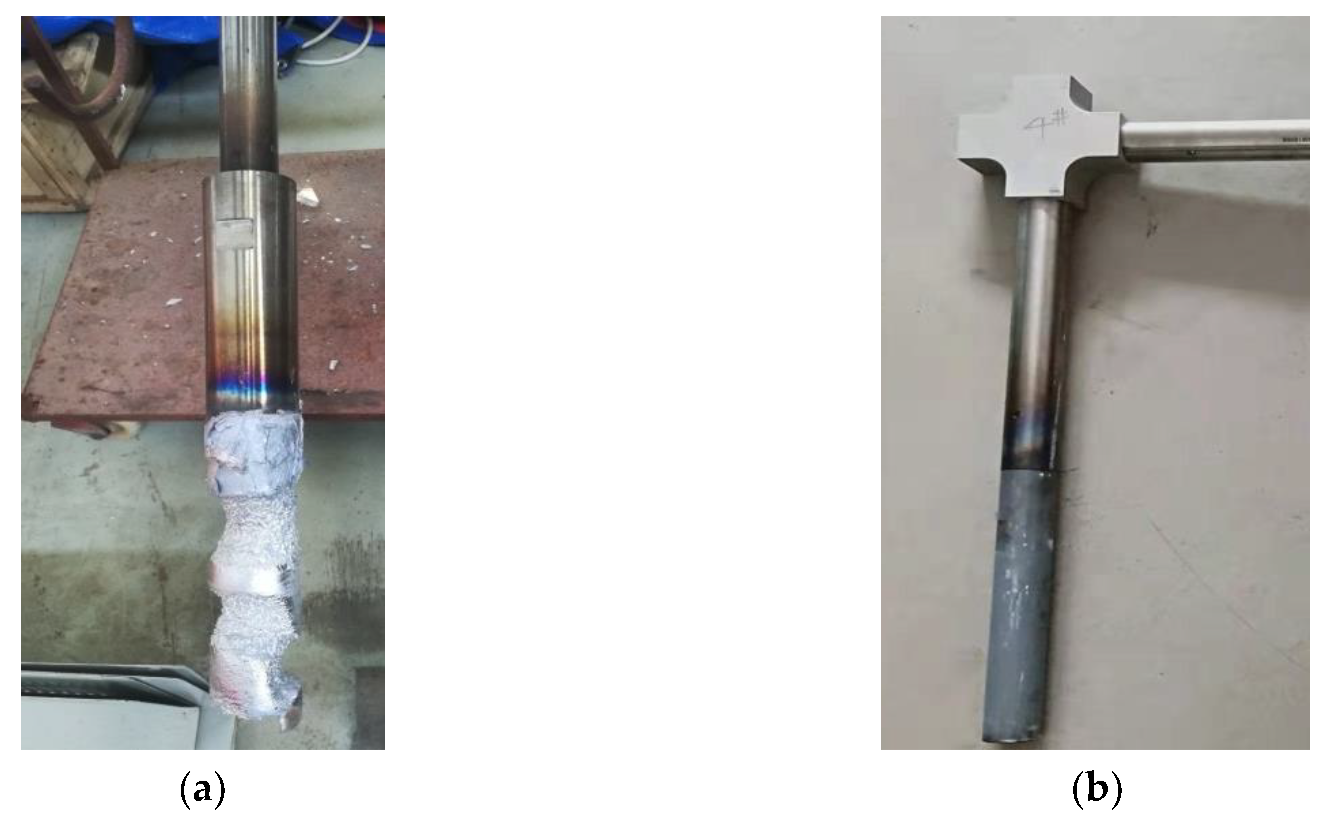
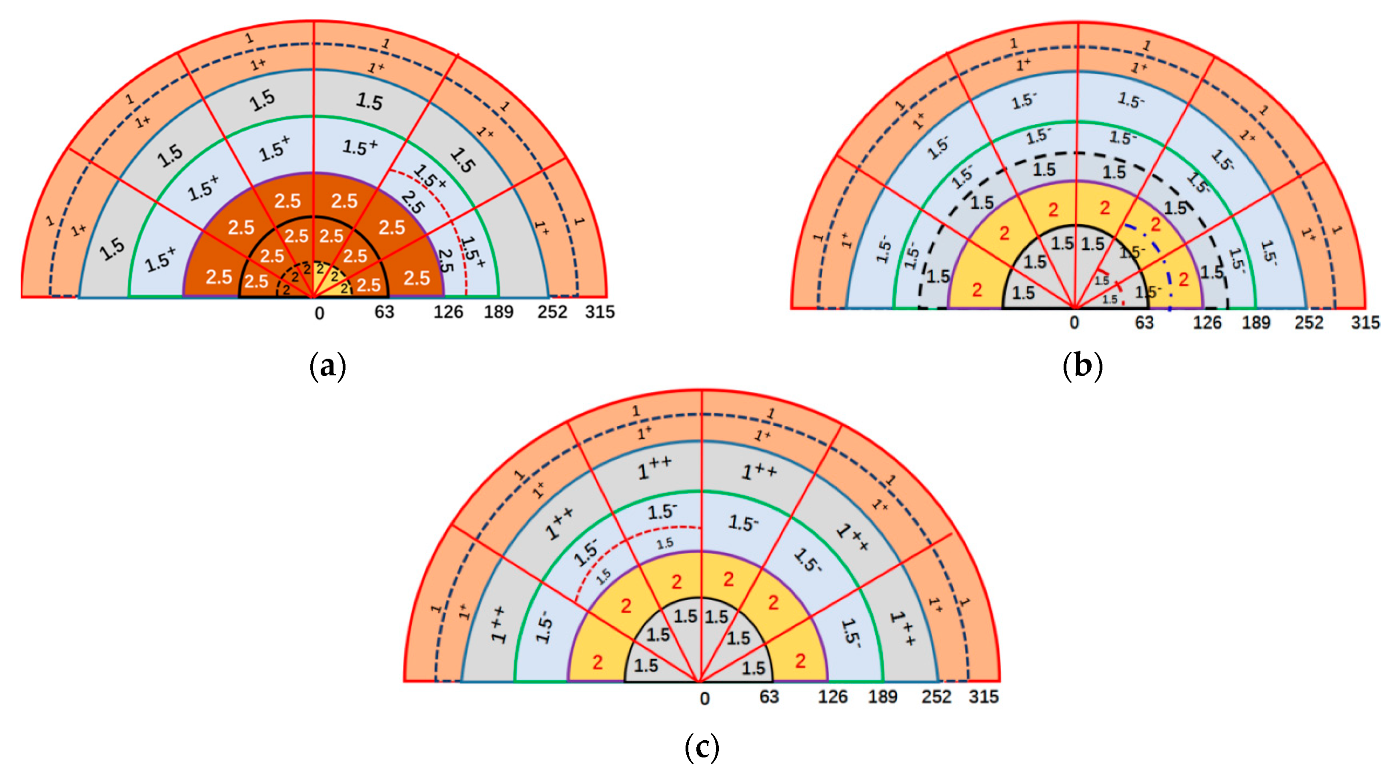
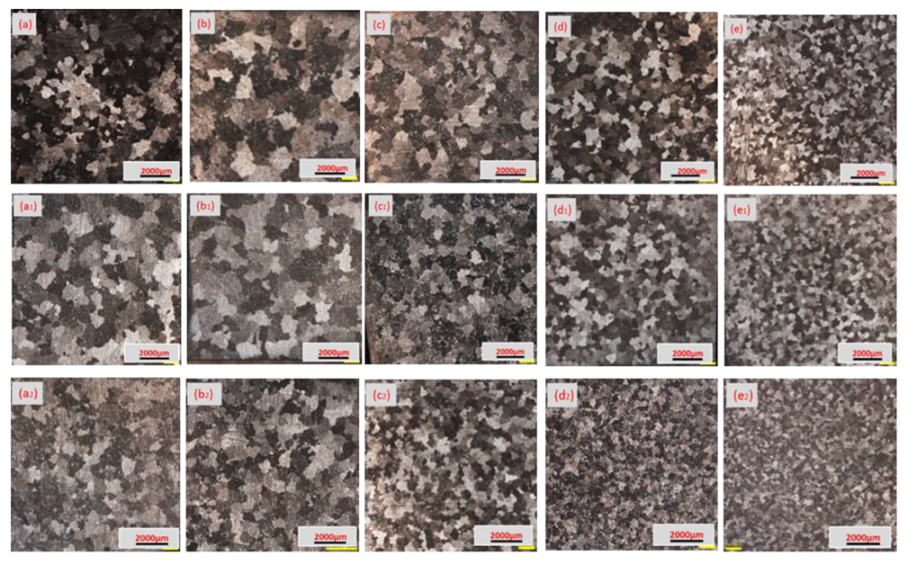

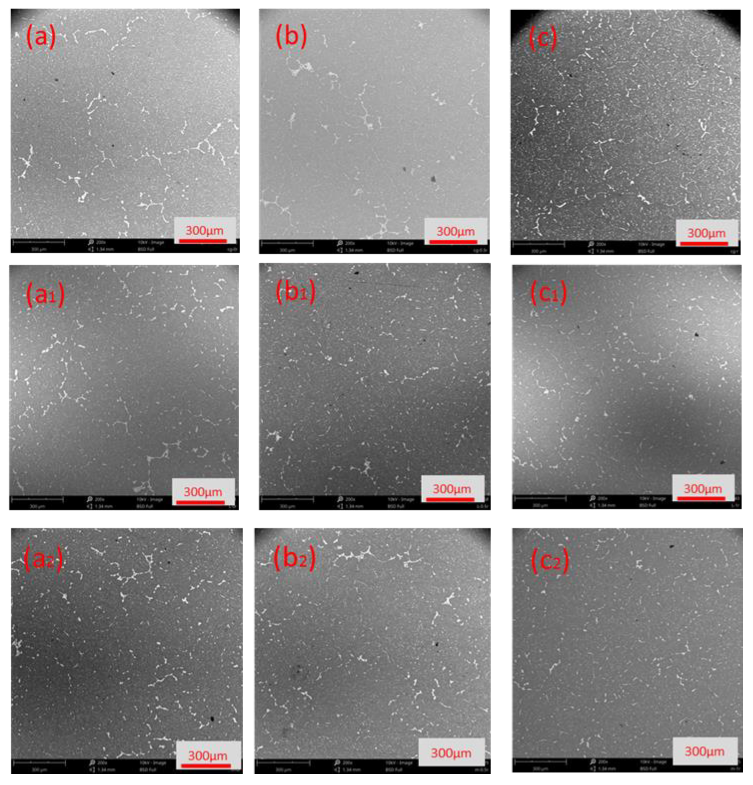

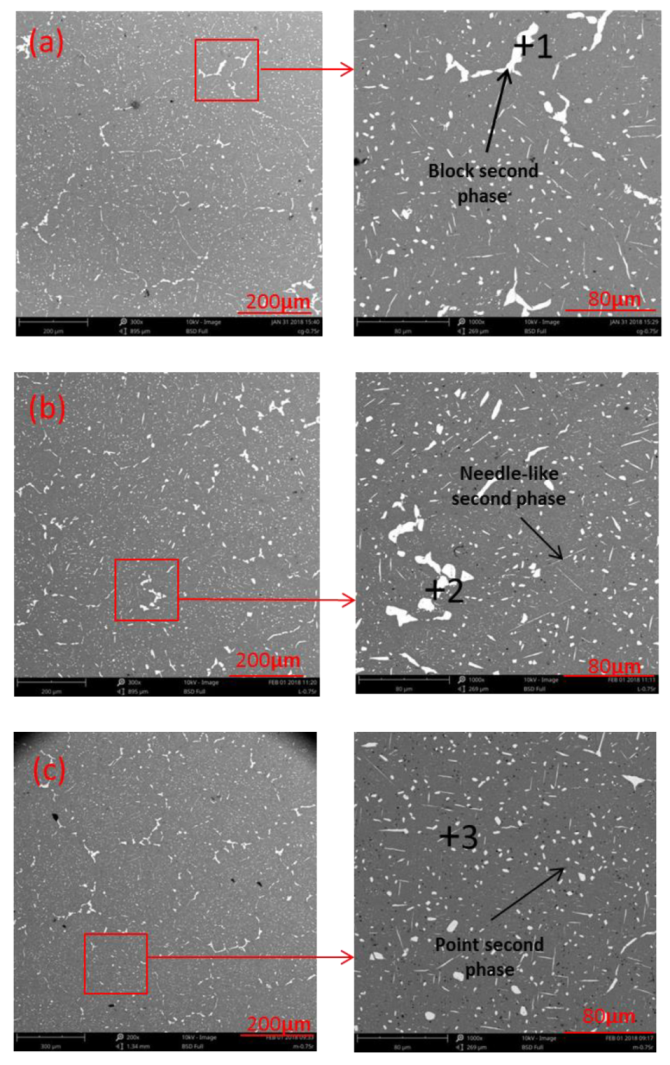
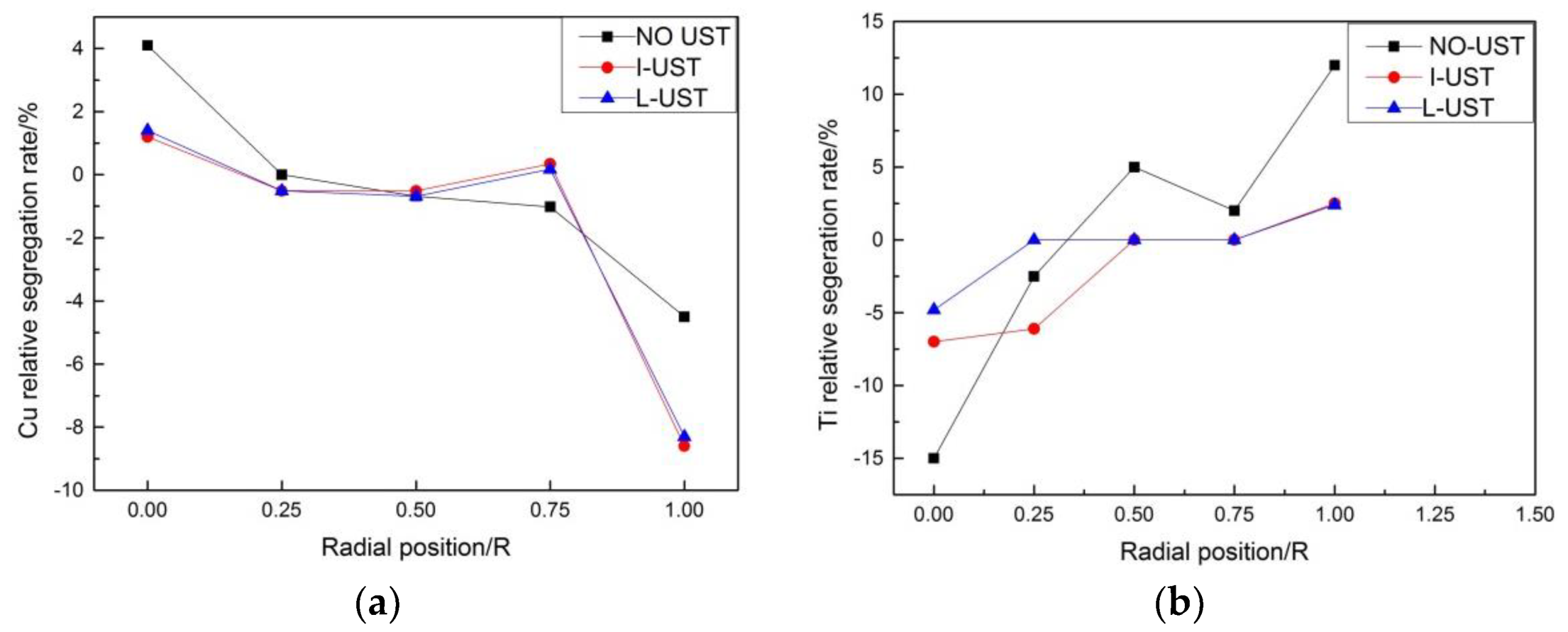
| Chemical Composition | Cu | Mn | Fe | Ti | V | Zr | Si | Al |
|---|---|---|---|---|---|---|---|---|
| NO-UTS | 5.9 | 0.36 | 0.018 | 0.04 | 0.07 | 0.11 | 0.024 | Bal |
| I-UTS | 5.91 | 0.35 | 0.02 | 0.04 | 0.07 | 0.11 | 0.025 | Bal |
| L-UTS | 5.9 | 0.34 | 0.019 | 0.04 | 0.06 | 0.11 | 0.023 | Bal |
| Specification/(mm × mm) | Pouring Temperature/°C | Cooling Temperature/°C | Speed of Water Flow/(L/min) | Speed of Introducing Ingot/(mm/min) |
|---|---|---|---|---|
| Φ650 × 6200 | 696 | 29.1 | 321 | 24 |
| Type | Amplitude/µm | Frequency/KHz |
|---|---|---|
| I-shaped | 15.21 | 23.08 |
| L-shaped | 11.67 | 23.13 |
| Testing Point | Al | Cu |
|---|---|---|
| 1 | 64.33 | 35.67 |
| 2 | 63.17 | 36.83 |
| 3 | 64.02 | 35.98 |
© 2019 by the authors. Licensee MDPI, Basel, Switzerland. This article is an open access article distributed under the terms and conditions of the Creative Commons Attribution (CC BY) license (http://creativecommons.org/licenses/by/4.0/).
Share and Cite
Zeng, T.; Zhou, Y. Effects of Ultrasonic Introduced by L-Shaped Ceramic Sonotrodes on Microstructure and Macro-Segregation of 15t AA2219 Aluminum Alloy Ingot. Materials 2019, 12, 3162. https://doi.org/10.3390/ma12193162
Zeng T, Zhou Y. Effects of Ultrasonic Introduced by L-Shaped Ceramic Sonotrodes on Microstructure and Macro-Segregation of 15t AA2219 Aluminum Alloy Ingot. Materials. 2019; 12(19):3162. https://doi.org/10.3390/ma12193162
Chicago/Turabian StyleZeng, Tao, and YaJun Zhou. 2019. "Effects of Ultrasonic Introduced by L-Shaped Ceramic Sonotrodes on Microstructure and Macro-Segregation of 15t AA2219 Aluminum Alloy Ingot" Materials 12, no. 19: 3162. https://doi.org/10.3390/ma12193162






